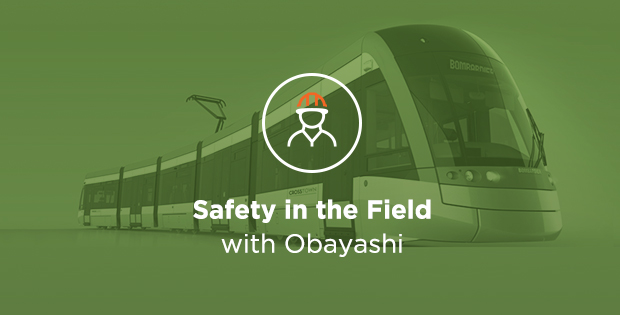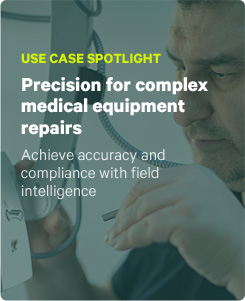
This is a conversation between Mark Scott (VP of Marketing, ProntoForms) and Christina Lindstrom (Health and Safety Manager, Crosstown Transit Constructors).
Mark: There are lots of eyes on your current project from municipal to federal governments – lots of pressure to get things done on time, on budget, with lots of partners etc. I can only assume health and safety is paramount.
Christina: Health and safety is a big task and we take it very seriously on site. We’re working 24/7 – so it’s a lot to manage.
Mark: Can you talk us through the kinds of struggles you experienced prior to adopting technology? What were some of the road blocks that made you think there must be a better way?
Christina: This contract is very document driven, everything must be documented and submitted to Metrolinx, who is the contractor for the city. Not only did we have to write the safety program, we also wrote the orientation program. Everyone who sets foot on the job site must go through this orientation. Part time employees, plus 500 full time and contract, and triple that number in visitors and short time employees. Incident reports, orientation, violation reports, inspections, these were all done on paper; then hole punched, scanned, and put in binders after being submitted to the owners. We had dozens of stacks of paper and binders, and it took hours and hours of work submitting those documents. It was crazy.
Mark: How did you take the next step? Talk about your search for a solution.
Christina: My husband was our documents control engineer – he saw the great lengths I was going to with paperwork and work flow issues. He said there must be a better way – another member of my staff had started using a similar application for a legislation audit to make sure our safety program and policies were up to snuff with the ministry of labor. We sat down and started doing some initial research. I was blown away – I had no idea that this type of technology existed. I was pleasantly surprised to see the options in front of us. I got a budget and a green light for a trial period and interviewed three or four different companies. I was most impressed with ProntoForms for multiple reasons.
My decision was price and customer service driven, and I liked the ease of creating my own forms with the option of having ProntoForms create forms for us when needed. We started with simple forms – inspection and orientation. Just those two forms saved my staff and myself 10 hours a week at least. No more writing by hand, scanning or transcribing, saving, and submitting. Suddenly, it was a seamless process. Everything was done either on my phone or tablet – all I had to do was press send. It went directly to documents controlled, directly into the file and I never need to see it again unless I need to reference it later.
We tried it out for a couple of months and slowly but surely, we expanded to not only HR but engineering as well – which has been the biggest win. It’s one thing to save my time, but to save the time of the entire staff and increase the number of people who are actually reading the reports – its’ just amazing.
Mark: Now you’ve got ProntoForms working for you from a safety perspective and the engineers are also using it?
Christina: We are using ProntoForms for safety, we’re using it for orientation, incident and injury reports, inspection, and accident reports. We document all these things using the ProntoForms technology. For HR, we are using it for orientation, disciplinary action, and termination. The engineers use it for their daily reports. We had two different kinds of processes that are using this technology. One is for surface – utility relocation or work on the actual street side, and the second is for engineers underground doing tunneling and cross passage construction. These forms are intense, so we had ProntoForms design those for us. They document everything form gas testing to air flow to photos of progress, engineering calculations that need to be documented to satisfy the contract.
Mark: Can you talk a little about the different processes – is there a different work flow in terms of where you store or share the data?
Christina: We share all our collected data in our shared drive through our cloud file where we can access it on our computers organized by file type. We learned quickly to be careful with the titles of our files for accessing at a later date. We have gotten much more specific for quick and easy access.
Mark: Do you have some before-and-after stories in terms of performance? What did that look like in the past versus now?
Christina: Prior to ProntoForms, any type of data including monthly data summaries that we submit to our office in Japan and our client here, we had to maintain an Excel log that notated date time incident, type of report, etc.; it was cumbersome. Now we can extract that information directly from ProntoForms, which makes monthly reporting a much easier task. With violations and any disciplinary action, we are able to pull up one file and sort by name to see anyone who has been written up since we started with ProntoForms. The days of maintaining an Excel log are over. Now that information is at the tip of my fingers.
Mark: EHS people are often thinking about predictability of deployment. You have a diverse group of business processes – can you talk about the deployment – did it go as expected? How long did it take and how did your staff respond to the change?
Christina: After safety started using ProntoForms, we integrated a violation form in a ‘fun’ way. We had everyone download the app on their phone and explained how to use it. Then, we had everyone write up the person next to them for the most absurd things they could think of. We had some fun with it. You can imagine what a bunch of contractors came up with. After that we got signatures, and the doors opened a little bit – people were willing to try this new technology.
My next goal was engineering. After working underground for 8-12 hours, the last thing I wanted was for my engineers to come above ground and to do paperwork for another hour. I had one tech-savvy engineer help me create the best possible parameters for a mobile form and we had ProntoForms create the forms for surface and cross passage work. He started using it and within a few weeks, I had 3 other engineers trying it without me asking them to, and got approval from the project manager to make it site wide.
There was a little grumbling at first, but now nearly every engineer is excited about the time saved. We only had to bribe a few supervisors with new iPads, so their “man fingers” could fit on the keyboard versus an iPhone. They have contributed to tweaks here and there to optimize our use of the forms. It has been fantastic. We are going to try to implement more ProntoForms on the next project.
To learn how ProntoForms can help your team go mobile, sign up for a demo and a free trial here.




